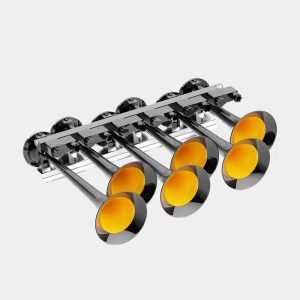When Should You Cut Back Perennials in the Fall?
As autumn approaches, gardening enthusiasts start preparing their perennial gardens for the coming winter. An important part of this preparation is cutting back the dead growth and foliage of perennials. But when is the right time to cut them back? Here are some tips on the best time to cut back perennials in fall.
Why Cut Back Perennials in Fall?
Cutting back perennials in autumn serves several purposes:
Removes Dead Foliage
Most perennials die back to the ground after the growing season. The dead leaves and stems can harbor insect eggs and fungal diseases. Removing them improves the health and appearance of the garden.
Makes Space for Spring Growth
Cutting back perennials removes the old growth and makes way for new shoots to emerge in spring. Plants that aren’t cut back struggle to push through the congestion of last year’s growth.
Improves Air Circulation
Dense mats of dead foliage can obstruct air flow around the crowns of plants. Good air circulation is essential to prevent fungal diseases.
Avoids Damage from Snow and Ice
Wintry precipitation can flatten and break stems and foliage that is left standing. Cutting it back prevents storm damage.
Provides Winter Interest
The remaining seed heads and stems left after fall pruning create visual interest in the winter garden.
When to Cut Back Different Types of Perennials
Timing for cutting back perennials depends on the plant type:
Spring Bloomers
Plants like hellebores, bleeding hearts, and lady’s mantle start blooming in early spring. Leave any foliage that looks healthy and cut back any that is dead or diseased.
Summer Bloomers
These perennials put on their floral display in late spring or summer. Examples include coneflowers, Russian sage, and daylilies. Cut these back once they die back in late fall.
Fall Bloomers
Asters, mums, sedum, and other perennials that bloom in autumn should be left uncut in fall. Prune them in early spring before new growth starts.
Evergreen Perennials
Perennials that stay evergreen through winter, like candytuft and epimediums, should not be cut back at all in fall. Trim them lightly in early spring to shape them.
Grasses
Ornamental grasses can be cut back to a few inches above the ground after the foliage fades in autumn. Leave any decorative plumes and seed heads for winter interest.
Vines
Wait until late winter to prune back vines like clematis. This avoids damaging any vine buds that have already formed for next year’s flowers.
How to Cut Back Perennials in Fall
Use the following proper technique when cutting back perennials in autumn:
Use Clean, Sharp Pruners
Bypass pruners with sharp blades make clean, easy cuts. Dull blades crush and tear stems. Avoiding the spread of disease.
Leave Some Foliage at Base
Don’t cut all the way to the ground. Leave 2 to 3 inches of foliage to protect the plant crown through winter.
Cut Back to Just Above a Leaf Node
Make the cut just above a leaf node or intersection of stems. This encourages bushy new growth in spring.
Remove Dead Stems and Foliage
Carefully cut away and dispose of any dead or damaged growth. Also remove debris like fallen leaves around the plants.
Add Winter Mulch
After cutting back perennials, cover the soil around them with 2 to 4 inches of shredded leaves, wood chips, or straw to prevent frost heaving.
Stop Deadheading Spent Flowers
Plants form seed heads after done blooming. Leave the heads for winter interest, and as food sources for birds. Stop deadheading.
Stake Tall Plants
Add stakes around any top-heavy perennials before the ground freezes. Prevent them from flopping over under snow loads.
Avoid Cutting Too Early or Too Late
Cutting back perennials at the right time is key:
- Too early, and you may remove next year’s flower buds.
- Too late, and insects and disease can overwinter in the dead growth.
- Ideal timing is late fall after several hard frosts but before the ground freezes.
Perennial Cut Back Fall Checklist
Here is a summary checklist of when to cut back different perennial plants in autumn:
- Spring bloomers – prune dead foliage only
- Summer bloomers – cut back in late fall
- Fall bloomers – do not cut back, prune in spring
- Evergreens – do not cut back
- Grasses – trim back anytime after foliage fades
- Vines – prune in late winter
5 FAQs About Cutting Back Perennials in Fall
1. Should I cut back perennials before or after the first frost?
Cut back after the plants have been damaged by frost but before the ground freezes solid. Two or three hard frosts are ideal.
2. Can I cut back all my perennials at the same time in fall?
No, the timing depends on the bloom period. Prune spring bloomers lightly but save major cutting for summer and fall bloomers.
3. What perennials can I not cut back in autumn?
Avoid cutting back fall bloomers, evergreen perennials, and vines until winter or early spring.
4. How far down should perennials be cut in fall?
Leave 2 to 3 inches of foliage at the base for protection. Remove all dead stems and foliage.
5. How do I prepare tender perennials for winter?
Dig up tender perennials like dahlias and canna lilies. Cut back foliage, store bulbs or tubers in a cool, frost-free place until spring.
Conclusion
Knowing when to cut back perennials properly prepares them for winter and ensures healthy growth next spring. Use this fall perennial pruning guide to determine the best time to trim back each plant. With the right timing, your perennial beds will thrive season after season.


